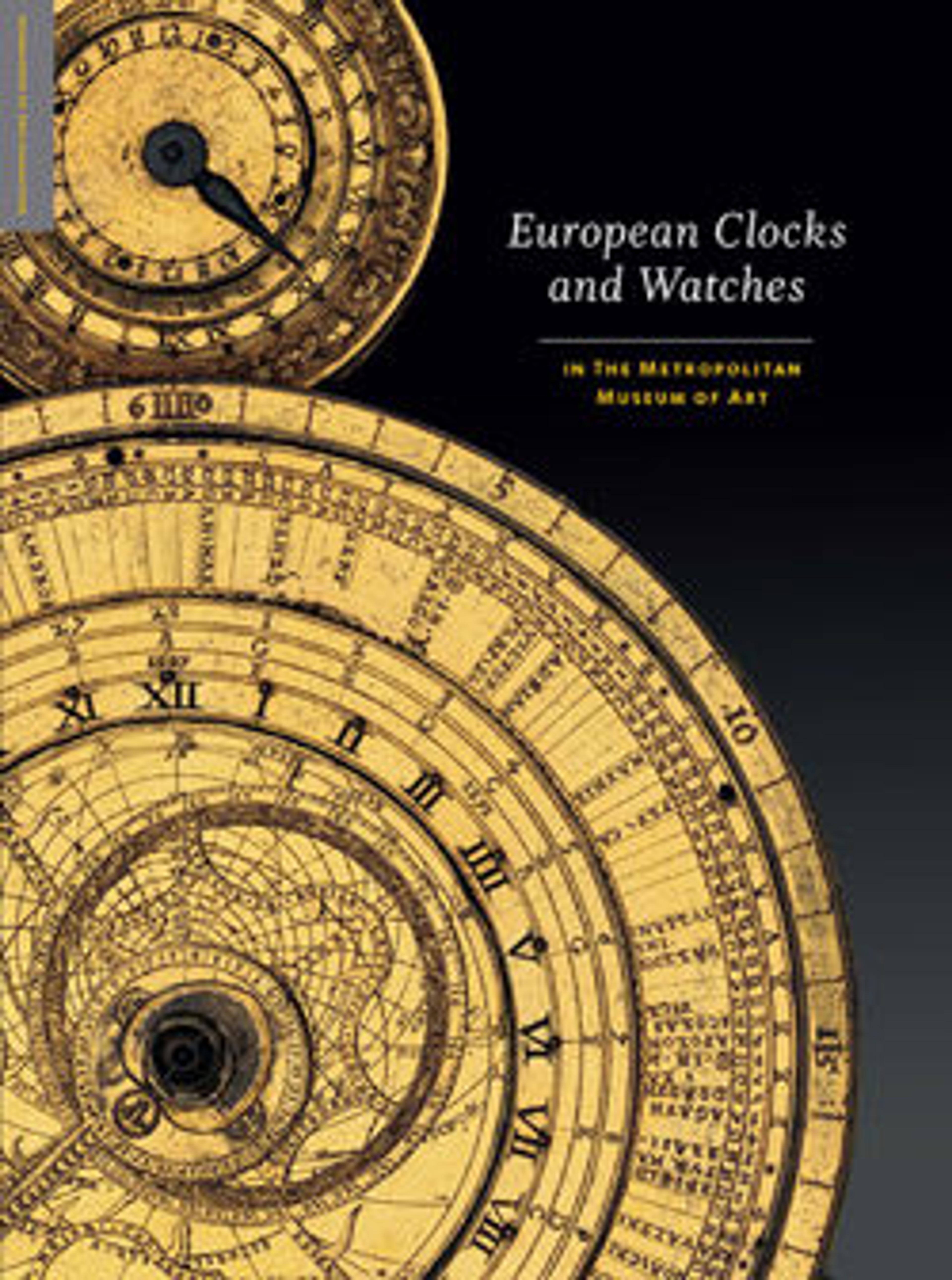The Triumph of Love over Time
This clock illustrates the triumph of love over time. The young god of love points to the minutes with his arrow while holding a blazing torch to the celestial globe that contains two revolving rings between its hemispheres, one with the minutes (5–10) and the other with the hours (I-XII). Chronos, or Father Time, sits dejectedly at the right. The figures, modeled by Augustin Pajou (1730–1809), were taken from a more complex design for a clock made by the royal sculptor in 1775 for the prince de Condé and were probably cast by Étienne Martincourt (active 1762–1800). The subject of the relief on the pedestal is a sacrifice to Eros. At this time, the workshop of the Lepaute family consisted of Jean-Baptiste (1727–1802), named horologer du roi in 1775; Pierre, called Henry Lepaute (1749–1806); and Pierre-Bazile, called Sully-Lepaute (1750–1843). The gilt bronze is beautifully finished and the contrast between the burnished and matte areas is particularly striking.
Artwork Details
- Title: The Triumph of Love over Time
- Maker: Clockmaker: Jean-Baptiste Lepaute (French, 1727–1802)
- Modeler: Figures modeled by Augustin Pajou (French, Paris 1730–1809 Paris)
- Founder: Figures cast by Etienne Martincourt (French, active 1762–1800)
- Date: ca. 1780–90
- Culture: French, Paris
- Medium: Gilt bronze, marble, enamel
- Dimensions: Overall (Wt. confirmed): 37 x 41 x 12 1/2 in., 379lb. (94 x 104.1 x 31.8 cm, 171.9133kg)
- Classification: Horology
- Credit Line: Gift of J. Pierpont Morgan, 1917
- Object Number: 17.190.2126
- Curatorial Department: European Sculpture and Decorative Arts
More Artwork
Research Resources
The Met provides unparalleled resources for research and welcomes an international community of students and scholars. The Met's Open Access API is where creators and researchers can connect to the The Met collection. Open Access data and public domain images are available for unrestricted commercial and noncommercial use without permission or fee.
To request images under copyright and other restrictions, please use this Image Request form.
Feedback
We continue to research and examine historical and cultural context for objects in The Met collection. If you have comments or questions about this object record, please complete and submit this form. The Museum looks forward to receiving your comments.
